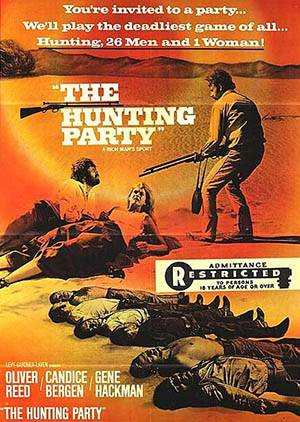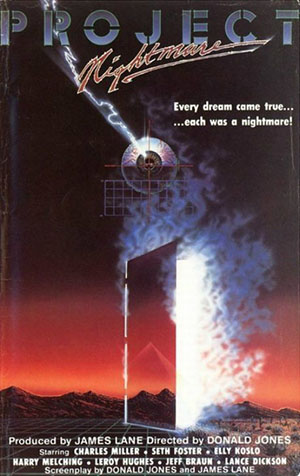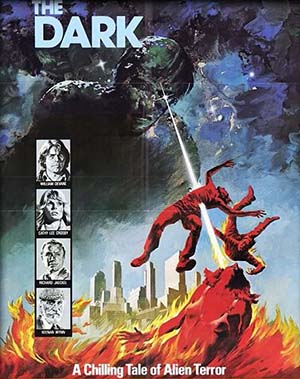
For fans of sadistic blood spilling in the desert.
Accessing our premium content requires a password. To receive the password, please Like us on Facebook and send a message to our page.

For fans of sadistic blood spilling in the desert.
Accessing our premium content requires a password. To receive the password, please Like us on Facebook and send a message to our page.

Mysterious forces lie beneath the desert.
Project Nightmare is a subdued, special effects lean, ’80s sci-fi (I hesitate to insert the term “thriller” here) that plays as a strange combination of The Philadelphia Experiment, Beyond the Black Rainbow, ’60s Star Trek, and the Tarkovsky films Stalker and Solaris. While it was released in 1987, Project Nightmare has a definite feel of being much older and, while not as good, could easily fit in as a contemporary of something like THX 1138.
The story itself is more-or-less on par, and fits into that classic Harlan Ellison / Star Trek: TOS / Outer Limits storytelling model. It’s not so much the idea of the movie that causes it to be lackluster, but the delivery. Project Nightmare falls victim to the usual expository pitfall of tell-don’t-show, which is more-or-less necessitated when trying to deliver an overly ambitious no-budget motion picture. It also suffers from the nearly ubiquitous direct-to-video nuisances of cardboard cutout character development, stilted delivery, and paper thin romance.
On the technical side of things, although this film is quite watchable, the production is mediocre. The dialogue is poorly dubbed ADR (which is sad, since Project Nightmare is not a foreign film), and the photography is problematic. There are multiple scenes in the film that suffer from “stock footage” effect, where things are either not developed properly, grainy, or aren’t in sharp focus.
There are some primitive yet interesting video effects, and although the soundtrack is minimal, it’s fitting. The squelchy analog synth noises (ARP 2600?) would be entirely at home in the aforementioned THX 1138, and are equally appropriate and serviceable in the context of this film.
Project Nightmare is a slow burn and has a certain dullness to it, but at the same time it has a strange charisma. This film doesn’t have all that much to offer in terms of action, novelty, or originality, yet it retains an odd je ne sais quoi charm.
The ending credits, if for no other reason, point out that Project Nightmare was clearly a low-budget indie project of love, and there’s something appealing about an ambitious yet underfunded group of hopefuls making such a vibey little flick. It will certainly never become a classic, cult or otherwise, and will likely never appear on anyone’s list of favorite obscure movies, but there’s something neat buried within this neglected celluloid dreamscape. I cautiously recommend it to fans of minimalist, psychological themed sci-fi.
Given that Project Nightmare almost certainly isn’t going to get the deluxe Blu-ray treatment, or even a modest DVD release, then you might want to cop it when you’ve got the chance.
Accessing our premium content requires a password. To receive the password, please Like us on Facebook and send a message to our page.

Who or what is the terrible menace? Serial killer? Zombie on the loose? Destructive alien lifeform sans motive? Movie poster and text crawl spoilers aside, discover the horrible truth only by watching The Dark!
By no means is this movie high brow, top tier material, but it’s not bottom of the barrel either. It’s flawed in its execution, but still less torturous than comparable pictures. It’s derivative, trend riding, B-movie schlock, but at least it’s not Z-grade, no budget, poorly dubbed foreign fare.
In the audio/video department, The Dark is technically sound, and despite allegations of excessively dark cinematography, the film is primarily watchable, at least in an aesthetic sense. While the soundtrack may leave something to be desired, the audio itself is clear and the speech intelligible. Compositionally, this movie is also a strong performer, featuring various angles and tracking shots that wouldn’t be attempted in lesser budget offerings.
The Dark also has the dubious advantage of cast, featuring reputable actors William Devane (Knots Landing), Philip Michael Thomas (Miami Vice), and Kasey Casem (Scooby-Doo, American Top 40). While there may not be any heavy hitting star power, the acting works well enough for this style of film and is surprisingly palatable.
Where this flick stumbles is that it has no idea what it is, or where its going. Despite the initial and temporary involvement of Tobe Hooper (Texas Chainsaw Massacre), the direction, and (especially) writing simply falls flat. None of the characters are particularly interesting, and none of the investments or set ups ever really pay off. The Dark is one of those movies where things are constantly happening, but the action is always divorced from any true context. Things keep advancing, yet not due to any particular involvement by any of the main characters. It’s almost as if the antagonist and protagonists never collide, although they’re ostensibly in the same universe. Dick Clark’s odd role of co-producer did apparently little for creative oversight, as the plot tries to go in multiple opposing directions.
The production is similarly found wanting in the special effects department, which are not only sloppy and clearly Star Wars influenced, but have an awkward glue-on feel, which isn’t the only aspect of this motion picture that is artificial and contrived.
The Dark is dogged by its many forced-fit, pasted together segments and shoehorned tropes. Regardless of ambiguous psychic help (no, not from Philip Michael Thomas!), and the lack of any solid police work, somehow all the relevant characters find their way from point A to point B. Along the way, we’re treated to arbitrary jump scares, a nonsensical car chase, a laughable montage, and the obligatory hero saves the day moment, which ends up being very clumsy, anti-climactic, and improbable (not to mention being stupidly risky and ill-advised).
What The Dark has going for it is that it falls into that narrow sweet spot of not being abysmal enough to be punishing, yet still bad enough to provide a certain classless entertainment. It’s likable as a brain-dead, vapid, train-wreck of a flick, prime for late-night witticisms among friends, or snarky Youtube commentaries. Which, let’s face it, is really the primary impetus behind B-movie fandom amongst today’s Ironic Generation.
Accessing our premium content requires a password. To receive the password, please Like us on Facebook and send a message to our page.

Published: Bantam, August 1996 WINTER IS COMING Plot Overview The great realm of Westeros is divided into seven smaller sub-kingdoms, each ruled by its own lord, who in turn are ruled by King Robert, who resides in King’s Landing. When the Hand of the King, Lord Arryn, dies suddenly, Robert … Continue reading
Accessing our premium content requires a password. To receive the password, please Like us on Facebook and send a message to our page.